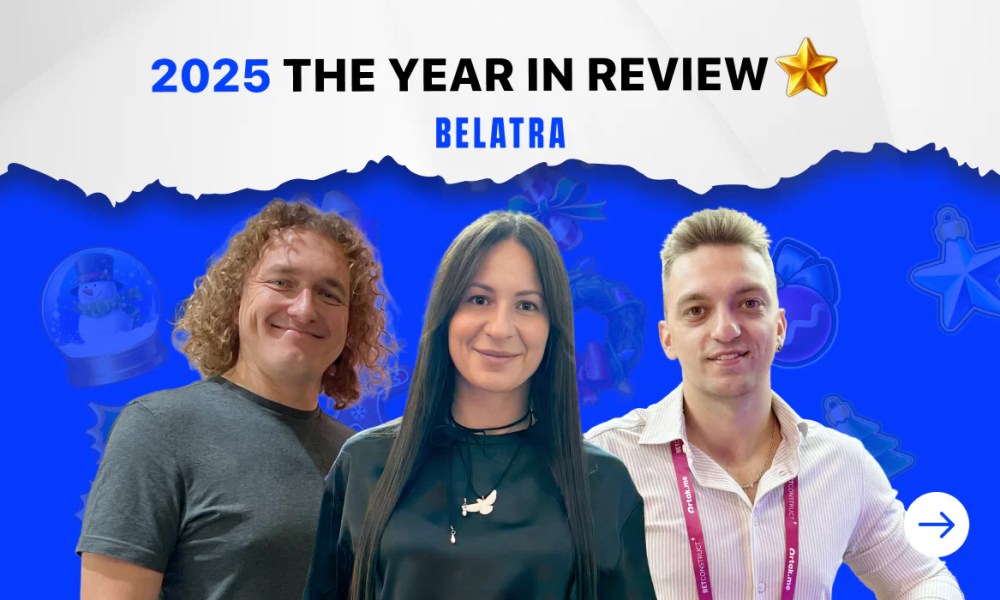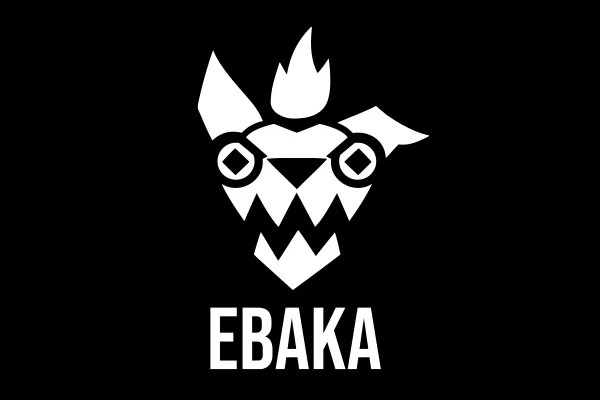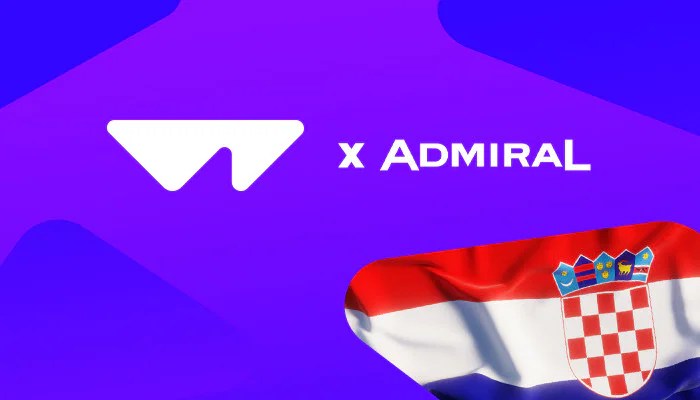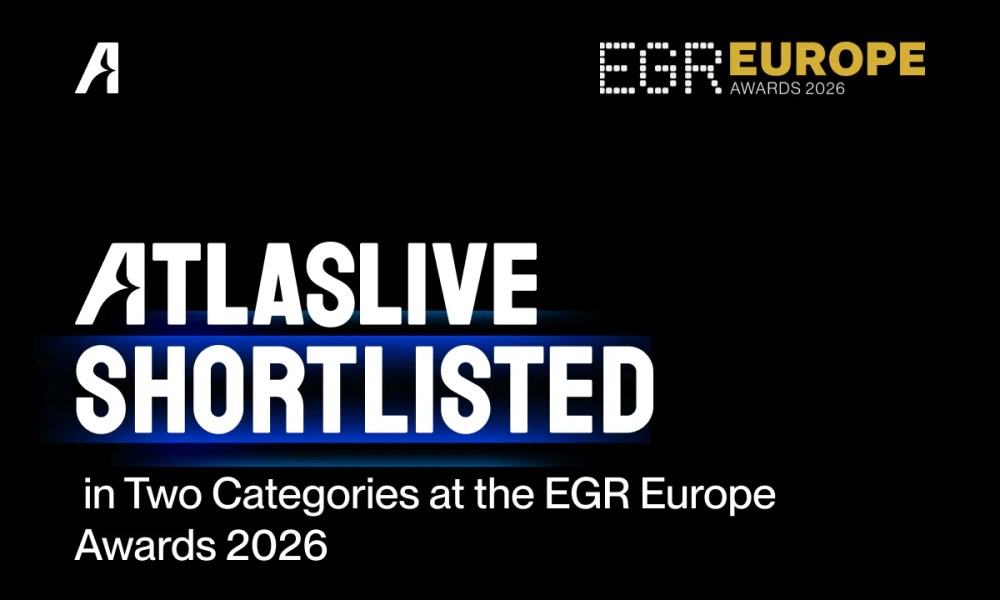Latest News
Odds on: Unlocking the potential of AI for esports betting
Jordan Peltier, Chief Data Officer at PandaScore, says that humans and machines must work together if businesses are to maximise the potential of AI when it comes to esports betting odds.
Artificial intelligence has been one of the most discussed industry topics over the past 12 months and it’s easy to see why. AI can be transformative for operators, suppliers and bettors, and while there are concerns around adversarial AI, when used in the right way, it’s a game-changer.
At PandaScore, AI plays a crucial role in the odds we deliver esports betting operators. This is because it is incredibly effective at handling complex, high-dimensional and unstructured data and finding patterns within it – these patterns are needed to predict the outcome of events.
This, of course, is the foundation needed for determining the odds for each market that we offer. But the power of AI goes beyond this.
It can adapt dynamically to new data which is just not possible with old statistical models like parametric distributions as they struggle to capture the non-linear relationship between variables so require additional manual engineering which takes time and resource.
But does this mean the AI machine is taking over from human trading teams? Absolutely not.
Leveraging the capabilities of AI and combining it with specialist human traders is the optimal approach because you have models that can capture the complexity of esports supported by human traders with a deep understanding of each discipline.
Odds should always be based on true probabilities and while there have been significant breakthroughs in AI – I’m talking about transformer-based models such as Large Language Models – it is still prone to making errors, especially when it comes to forecasting.
Let me explain by way of percentages. AI alone can get you 90% of the way to determining the true probability of an outcome but you need the human specialist trader to get you the final 10% of the way to perfection. And perfection is a must when it comes to odds.
Ultimately, this is what allows operators to offer high-value odds to their customers while ensuring a strong and stable margin from their esportsbook. What’s more, it only takes one small error for sharp, savvy bettors to exploit a mistake and that’s not what operators expect from their data partners.
It must be remembered that AI models are only as good as the data they feed from and still require training. Human traders help in this regard, providing a layer of security for core actions like settlement and odds checking when the model goes off market.
In some instances, the trader will have access to data the model doesn’t see of wasn’t trained on – things like a last-minute change to the player roster.
This is why our human traders are responsible for picking the tournament and market coverage that will most appeal to our operator partners, and our traders are on hand 24/7/365 to support operators in their efforts to offer a top esports betting experience to their players.
The training of AI models is crucial and again sees our trading and data science teams work together during the entire lifecycle of each AI model we build from designing the model to testing and interacting with models in production to ensure they are performing.
This is a virtuous cycle with our data scientists training the most optimal models that prove to be the easiest for our traders to manipulate. Traders also give a ton of deep and detailed feedback which our data scientists can use to improve the models.
The idea here is that the trading team has little input once the model is rolled out and often only make one input per match with the AI model then calculating all of the odds and markets. This ultimate is what powers our BetBuilder and PropBet products.
Having specialist traders for each esports discipline is also important. Each video game is like its own sport and while there are some similarities between some titles, the differences have an impact on the markets and odds offered and that’s exactly why specialist traders are a must.
Take shooter-round based game like CS2 and Valorant and MOBA games like Dota2 and LoL. With the former, there’s a lot of repetition in the gameplay which takes place round after round. This means betting markets are focus on rounds and kills for teams and players.
With MOBA games, there are objectives within the game that have a direct influence on who wins the match – things like kills, towers, nashors, inhibitors and dragons. This is complex – and doesn’t exist in traditional sports betting – and is why pricing teams must master in-game dynamics.
Again, this is something that AI can’t do on its own right now.
AI is a key pillar of our business, and we are incredibly proud of how we have used it in collaboration with our data scientists and traders to create models that deliver top odds for our operator partners and their players.
But working with AI is all about staying ahead of the game and our work is never done. This is why we continue to test, iterate, innovate and do all we can top perfect our models. This would not be possible without our incredible team which stands as a testament as to how machines and humans can work together in harmony.
The post Odds on: Unlocking the potential of AI for esports betting appeared first on European Gaming Industry News.

Latest News
From ‘Mummyverse’ to Crash Games: Belatra Reviews a Landmark 2025
Editor’s Take
Why this matters: Belatra has been a steady hand in the slots world for a long time, but 2025 marked a distinct shift in strategy. By entering the Crash vertical with Goose Boom Bang and winning big at SiGMA Africa, the studio is clearly pivoting to capture the high-growth, high-frequency players in emerging markets. They are no longer just a “classic slots” developer; they are diversifying the portfolio to ensure relevance in regions like LatAm and Africa.
The Full Story
Belatra Games, the specialist online slots developer, has issued a strategic review of its 2025 operations, celebrating a 12-month period defined by entry into new game verticals, significant franchise expansion, and high-profile industry recognition.
The year was characterized by a dual strategy: deepening engagement in established markets while aggressively expanding its content portfolio to suit local preferences in emerging territories.
Portfolio Evolution: Crash and Battles 2025 saw Belatra move beyond its traditional slot roots. The company made its debut in the high-demand Crash game vertical with the launch of Goose Boom Bang, a title designed to tap into the fast-paced gameplay preference of younger demographics.
Additionally, the studio introduced a fresh game concept with the launch of Battles, a new format unveiled for the first time in 2025, with further development planned for 2026.
The ‘Mummyverse’ Expands For fans of classic slots, the highlight of the year was the aggressive expansion of the Mummyverse. Belatra nearly doubled the size of this franchise over the year, making it the most extensive game universe in their entire catalog.
The developer also focused on B2B localization, releasing a number of exclusive bespoke games created specifically for selected operator partners to meet specific local market tastes.
Awards and Recognition The company’s strategic shifts were validated by industry accolades. Belatra secured over 30 nominations throughout the year, with standout wins including:
-
Best Slot Provider (awarded by BitStarz).
-
Most Played Game of 2025 for Make It Gold at the SiGMA Africa Awards.
-
Player’s Pick Award.
Management Commentary Misha Voinich, Head of Business Development at Belatra, commented on the studio’s momentum:
“This year has truly defined who we are as a studio – ambitious, creative and focused on building long-term partnerships. We’ve expanded our universes, launched new ones and entered exciting new markets that will all help us carry this momentum into the New Year.”
The post From ‘Mummyverse’ to Crash Games: Belatra Reviews a Landmark 2025 appeared first on Gaming and Gambling Industry Newsroom.
Latest News
‘Chaos and Soul’: Ebaka Games Plots Global Expansion After Viral Launch
Editor’s Take
Why this matters: The “Instant Game” vertical (Crash, Plinko, Mines) is becoming crowded, but Ebaka Games is cutting through the noise with a distinct brand personality. By securing BMM Testlabs certification so quickly after launch, they are signaling to Tier 1 operators that despite their “chaotic” marketing vibe, the math underneath is solid and compliant. The backing of industry veteran Dmitry Belianin also adds immediate commercial credibility to the startup.
The Full Story
Ebaka Games, the fledgling studio that promises to bring “chaos and soul” to the iGaming sector, has outlined an aggressive growth strategy for 2026 following a landmark launch period in late 2025.
The studio, which officially debuted in November, reports that its initial rollout reached more than five million people worldwide. The launch saw its portfolio go live with the operator Menace, serving as the initial testbed for its mechanics and “Ebaka modes.”
The Product: Instant Games with Personality Ebaka is bypassing traditional slots to focus on the high-growth vertical of fast-paced, instant-win games. Their initial lineup includes:
-
Plinko
-
Mines
-
Tower
-
Limbo
-
Crash
Differentiation is achieved through unique mascots and signature gameplay tweaks designed to offer high win potential and distinct visual identities, moving away from the generic interfaces often found in this genre.
Regulatory Milestone Crucially for its 2026 roadmap, Ebaka Games has confirmed it has secured certification from BMM Testlabs. This accreditation validates the fairness and integrity of its RNG (Random Number Generator) and game engines, removing a major barrier to entry for regulated markets. With this certification in hand, the studio plans to launch with a number of “major brands” in the coming year.
Management Commentary Vitalii Zalievskyi, CEO of Ebaka Games, commented on the studio’s unorthodox approach:
“It’s only been a few weeks since we first introduced Ebaka Games to the world. The feedback has been breathtaking, and it vindicates the decision for us to take a different path to the rest of the industry. You don’t need huge marketing budgets to grab people’s attention if you are building something truly innovative.”
Industry Backing The studio describes itself as being “created by players for players” but boasts significant industry firepower in its corner. The team includes Dmitry Belianin, a well-known figure in the sector who is the co-founder of Blask and Menace, as well as Managing Partner at Already Media.
The post ‘Chaos and Soul’: Ebaka Games Plots Global Expansion After Viral Launch appeared first on Gaming and Gambling Industry Newsroom.
Latest News
Racing Meets Nightlife: SBK Backs ARC’s New ‘Friday Night Live’ Series
Editor’s Take
Why this matters: British racing has a well-documented demographic problem; its core audience is aging. “Friday Night Live” is a direct attempt to fix this by blending high-stakes racing with the “experience economy” (DJs, nightlife vibes) that appeals to Gen Z and Millennials. Bringing SBK on board—a mobile-first, app-only sportsbook—is a perfect demographic fit, while the Racing Post adds the necessary credibility to ensure the actual racing product remains the focus.
The Full Story
Arena Racing Company (ARC) has unveiled the strategic commercial lineup for its upcoming Friday Night Live series, confirming SBK as the Exclusive Betting Partner and The Racing Post as the Official Media Partner.
Set to launch in January 2026, Friday Night Live is a new initiative created in collaboration with youth-focused events company INVADES. The series is designed to overhaul the traditional race day experience, featuring fast-paced fixtures under floodlights, DJ sets, and significant entertainment elements sandwiched between races.
The Commercial Deal
-
SBK: As the exclusive betting partner, the Smarkets-owned sportsbook will take naming rights and on-course branding for all 35 races. Crucially, these races will be broadcast live on mainstream television via ITV Racing as well as Sky Sports Research.
-
The Racing Post: As the Official Media Partner, the publication will provide content, coverage, and promotion across its digital platforms, aiming to bridge the gap between established racing purists and the new audience ARC hopes to attract.
A High-Stakes Experiment The series is not just a marketing exercise; it carries serious sporting weight. Each of the five scheduled nights will feature over £200,000 in prize money. The fixtures will rotate across three of ARC’s all-weather tracks: Wolverhampton, Newcastle, and Southwell.
Management Commentary David Leyden Dunbar, Group Director of Commercial Strategy at ARC, was clear about the target audience:
“We have been very clear that one of the aims of Friday Night Live is to engage the next generation of racing fans… Both [partners] have shown real enthusiasm to work with us… as well as using the platform that these fixtures will offer them to also engage with more established racing and sports fans.”
Adam Baylis, Marketing Director at SBK, added:
“Friday Night Live [is] a fresh and engaging concept that brings a new energy to British racing. SBK has always been built around sport… our focus is on enhancing the live race day experience in a fun, social and responsible way.”
The 2026 Schedule The series kicks off immediately in the new year:
-
9th Jan: Wolverhampton
-
6th Feb: Newcastle
-
20th Feb: Southwell
-
20th March: Wolverhampton
-
27th March: Newcastle
The post Racing Meets Nightlife: SBK Backs ARC’s New ‘Friday Night Live’ Series appeared first on Gaming and Gambling Industry Newsroom.
-

 Latest News2 weeks ago
Latest News2 weeks agoSCCG Announces Strategic Partnership with Yellow Elephant Studios to Expand Multi-Channel Gaming Content Worldwide
-
Latest News2 months ago
JioBLAST Launches All Stars vs India powered by Campa Energy: A New Era of Creator-Driven Esports Entertainment
-
eSports1 month ago
CS:GO Betting Gains Momentum in the iGaming Sector
-
Latest News3 weeks ago
THE 2025 PUBG MOBILE GLOBAL CHAMPIONSHIP GROUP STAGE WRAPS UP WITH LAST CHANCE IN SIGHT
-
Latest News1 month ago
S8UL Esports acquires Team Elite’s Free Fire MAX roster to form S8UL Elite
-
Latest News2 months ago
RocketPlay wins Best Customer Service at European iGaming Excellence Awards
-
Latest News2 months ago
Kambi Group plc Q3 2025 Report
-
Latest News3 months ago
GGPoker Unveils Massive Weekly $100K Freeroll, Kicking Off October 18













You must be logged in to post a comment Login